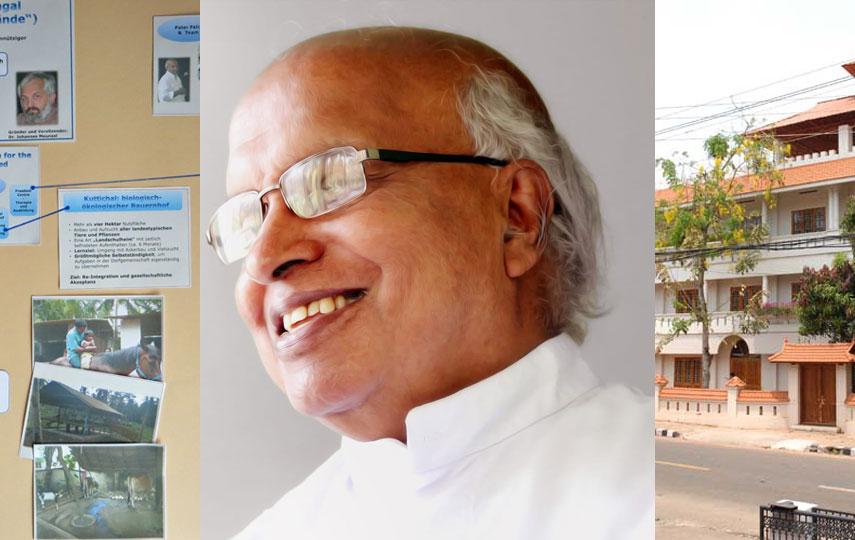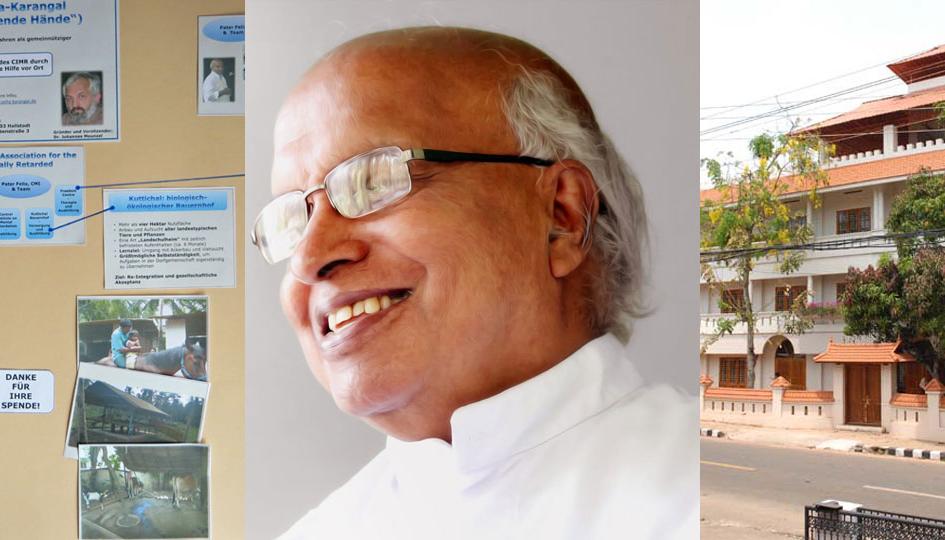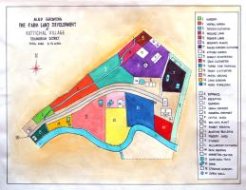Biologisch-ökologische Landwirtschaft
AGRICULTURAL-HORTICULTURAL UNIT
Located about 30 km away from the city of Thiruvananthapuram, the Agricultural-Horticultural Farm at Kuttichal, was established in June 1996,as a sub unit of CIMR. on a 10.8 acres plot. This Unit serves as a Vocational Training Centre with special emphasis on rural skills. Students are deputed to the farm every day; selected groups of students are taken for agricultural training. They are given opportunities to attend all farm operations, from sowing to harvesting and post harvesting technologies. Activities in this farm are structured to develop independent, community living skills and to make them self sufficient through total development leading to employment.
The following are the various resources available at the farm for practical training purposes.
Agricultural training is what happens at Agricultural-Horticultural Rehabilitation Farm. That is Mentally Challenged Kids are introduced to various farm practices along with animal husbandry. To that end, almost all the different types of agricultural products and farm animals found in the State of Kerala are available here. Thus by training the children in all kinds of farm and animal husbandry activities, they are made competent to do all kinds of activities without any difficulty. As a result of this the children when they return to their respective families, they do not become a burden, but are able to perform any activity in which they have trained (Agriculture, Animal Husbandry) and earn a livelihood from that particular activity while continuing as a part of society (along with social acceptance) with an extremely meaningful exsistance.
To make this farm which serves the mentally challenged an Agricultural University is the ultimate vision of Fr.Thomas Felix CMI. To this end a three year training programme is being imparted, through which any mentally challenged person can reach full development.
For Educational purposes the Agricultural-Horticultural Rehabilitation Farm is divided into 15 units.
- Nursery
- Herbal Garden
- Tapioca Cultivation
- Pasture Land
- Fodder Land
- Aromatic Plantation
- Ginger-Turmeric Cultivation
- Kitchen Garden
- Forest Plantation
- Spice Cultivation
- Three-Tier Farming
- Paddy Cultivation
- Mixed Orchard
- Land Scaping
- Agro-forestry
Each one of these units contains a particular type of agricultural crop. That is in the nursery, there are ornamental plants and in the Herbal Garden there are medicinal plants, in tapioca cultivation there are tapioca plants. These 15 units are further divided into 5 units, with one teacher and under that particular teacher one or two students are assigned. In these 5 units, all the related works are done by the particular teacher and students assigned to each unit and they are wholly responsible for it. The units are divided into five in the following manner.
- Unit – INursery, Herbal Garden, Tapioca Cultivation
- Unit – IIPasture Land, Fodder Land, Aromatic Plants
- Unit – IIIGinger Turmeric Cultivation, Kitchen Garden, Forest Plantation
- Unit – IVSpice Cultivation, 3 Tier Farming, Paddy Cultivation
- Unit – VMixed Orchard, Landscaping, Agro forestry.
As in a normal school the academic activities are conducted according to a fixed time table.
- 5.45 Wake up
- 6.30 Sequirrel dog, love birds- Cleaning and feeding (hen, duck, pig, rabit, vow, goat)
- 07.50 Prayer
- 08.00 Breakfast
- 09.00 --11.00 Unit Work
- 11.00 – 11.30 Break
- 11.30 – 01.00 Unit Work
- 01.00 – 02.00 Lunch Break
- 02.00 – 02.30 Recreation – Bongos, Music, Dance etc.
- 02.30 – 03.15 Unit Work
- 03.15 – 04.00 Sports and Games
- 04.00 Tea Break
- 04.30 – 05.30 Discussion
- 05.30 Personal Work
According to this time table the students and the teachers go to their respective units and work after analyzing what particular works are to done in that unit on that particular day. That is first they collect the coconuts, coconut leaves and other parts of the coconut stan that have fallen in each unit and collect it at a central place. Then whatever daily work has to be performed at that particular unit is done by them. (Plant, plants, water the plants, put manure for the plants, remove weeds, protect the plants, arrange coconut husks etc.) The children also collect the necessary tools for the above works and after use clean and return them to their respective places.
Are your interesting on more information, please contact Asha-Karangal, we would like to inform you more






